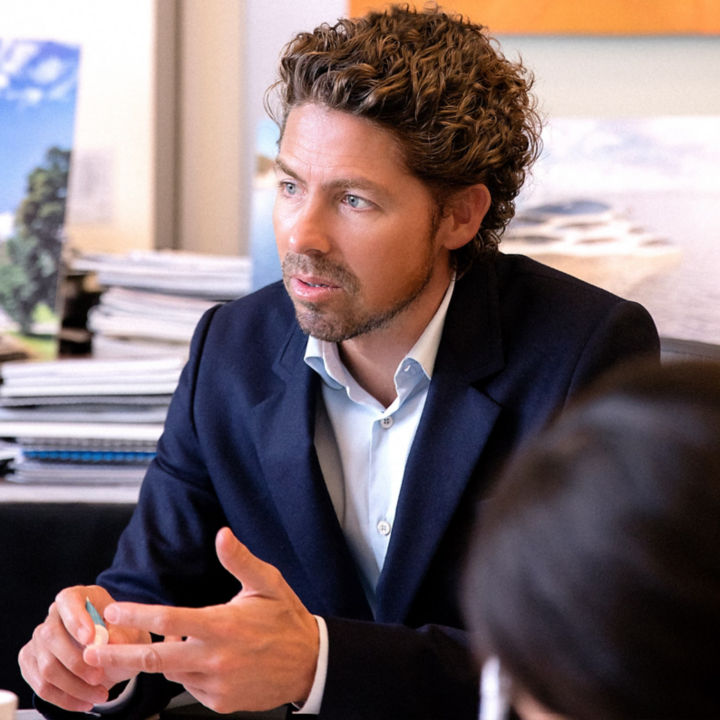Cities of the future are places where technology and architecture converge for sustainable growth. In the Flow of Urban Life podcast, Mexico-based architect Fernando Romero sees a growing role for technology, restoration and repurposing in the future of urban environments.

Technologies are shaping our cities at an unprecedented pace, promising a future vastly different from the present. Artificial Intelligence (AI) holds the promise of solving complex problems efficiently, and robots may become ubiquitous, revolutionizing the way we live and work. But our future urban environments won’t be all high-tech and flashy, says architect and design curator Fernando Romero.
“In essence, cities will remain the same. However, the technologies involved in the cities are going to be evolving dramatically faster as time evolves. And this will make life completely different.”
One of the most exciting – and futuristic-flavored – developments that he is involved in is the 330-mile-long Mexloop, one of the world's first Hyperloop corridors. A transformative project in mass mobility, this revolutionary transport system will initially hurtle cargo at an astonishing 700 miles per hour, reducing a six-hour trip to a mere 45 minutes.
Architecture is more than just a design; it's a tool for development.
Romero believes that the project's potential is immense, especially in the Bajío region because it connects four major cities – Mexico City, León, Guadalajara, and Querétaro. Hyperloop's innovation, he says “lies in reducing friction with the wind by placing it inside a tube, making it environmentally friendly and flexible”.
How can architecture serve society?
For Romero, architecture is more than just design; it's a tool for development. He cites Havana, Cuba, as an example where architecture can play a pivotal role in revitalizing an economy. “If you can bring investment by building an amazing new project that boosts tourism, that will help people because it will create employment and development.”
Romero says he is as passionate about preserving architecture as he is about designing futuristic structures like the Mexloop. He declares that efficiently restoring existing structures can be a great way to build for the future.


